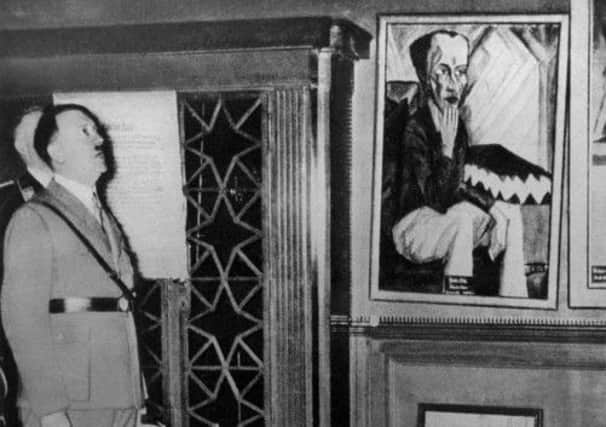Revealed: looted Nazi art hoard worth £1bn


The hoard, estimated to be worth about £1 billion, was recovered from the flat belonging to Cornelius Gurlitt, the sole surviving son of celebrated Nazi-era art collector and dealer Hildebrand Gurlitt.
Investigators revealed previously unknown works by high-profile artists were among the newly discovered works which they have now confiscated.
Advertisement
Hide AdAdvertisement
Hide AdAt a press conference in Bavaria yesterday Reinhard Nemetz, the Augsburg public prosecutor in charge of the case, hinted that until now no officials had interviewed Mr Gurlitt, 80, about the paintings.
The works – some of them said by investigators to be “priceless” – were said to have been lost to the flames when Allied aircraft bombed Dresden in 1945.
It was revealed at the weekend that a chance encounter on a train from Zurich to Munich in September 2010 triggered the covert investigation of Gurlitt that led to the artworks being discovered in the apartment in Munich in February 2012. It took customs officials three days to remove the hoard.
Tasked by Nazi propaganda minister Joseph Goebbels to turn the “decadent art” of wealthy collectors – many of them Jews forced to sell their paintings for a pittance – into hard cash, Mr Gurlitt snr was one of four art sellers employed by the regimen but he was never investigated.
He told the Allies the bulk of his collection was destroyed in the saturation bombing raid on Dresden in February 1945.
But the collection was handed down to his widow after his death in a car crash in 1956 and, after she died in 1967, to his son Cornelius.
The haul includes previously unknown works by and original pieces by other artists including Franz Marc, Oskar Kokoschka, Toulouse-Lautrec, Max Liebermann, Ernst Ludwig Kirchner, Max Beckmann and Gustave Courbet.
Asked why the public had not been told of the find earlier, Mr Nemetz said: “The public prosecutor’s office never goes to the public. Until today. It is for us counterproductive to go public with such a case.
Advertisement
Hide AdAdvertisement
Hide Ad“We don’t want to keep the pictures. The pictures should be not hung in my office. The authorities had kept the case secret for purely practical and legal reasons.
“There is currently no contact with the suspect. For good reason I say nothing about him.
“The initial suspicion lies in the direction of tax evasion. We have no urgent suspicions which would justify an arrest warrant.”
And he refused to answer questions as to whether Mr Gurlitt jnr was still alive.
When asked why the rightful heirs to the pictures had not yet been contacted, he said: “Our primary focus is to check whether there is a criminal offence. It is not easy to locate the rightful owners. Especially not when there are over 1,400 pictures.
“The investigations are in fact and law, costly, complex, difficult and lengthy.”
Officials also told how they have yet to search another house owned by the German in the plush Salzburg district of Aigen, in Austria.
The Central Council for Jews in Germany yesterday called for a “meticulous reconnaissance” of the background to the art discovery.
Advertisement
Hide AdAdvertisement
Hide Ad“The journey that each painting took must be reconstructed exactly in order to locate the rightful owners or their descendants”, said the council’s chairman, Dieter Graumann. “Late justice is better than none.”
Investigators said there are three strands to the inquiry. The first is to find out if any pictures are listed as missing or stolen before or during the war; the second to ascertain how many pictures were originally owned by Mr Gurlitt’s father, and the third is to try to reunite any missing pictures with their rightful heirs.
The Nazis ravaged museums, churches, galleries and private collections to amass vast numbers of almost priceless works, historians say.